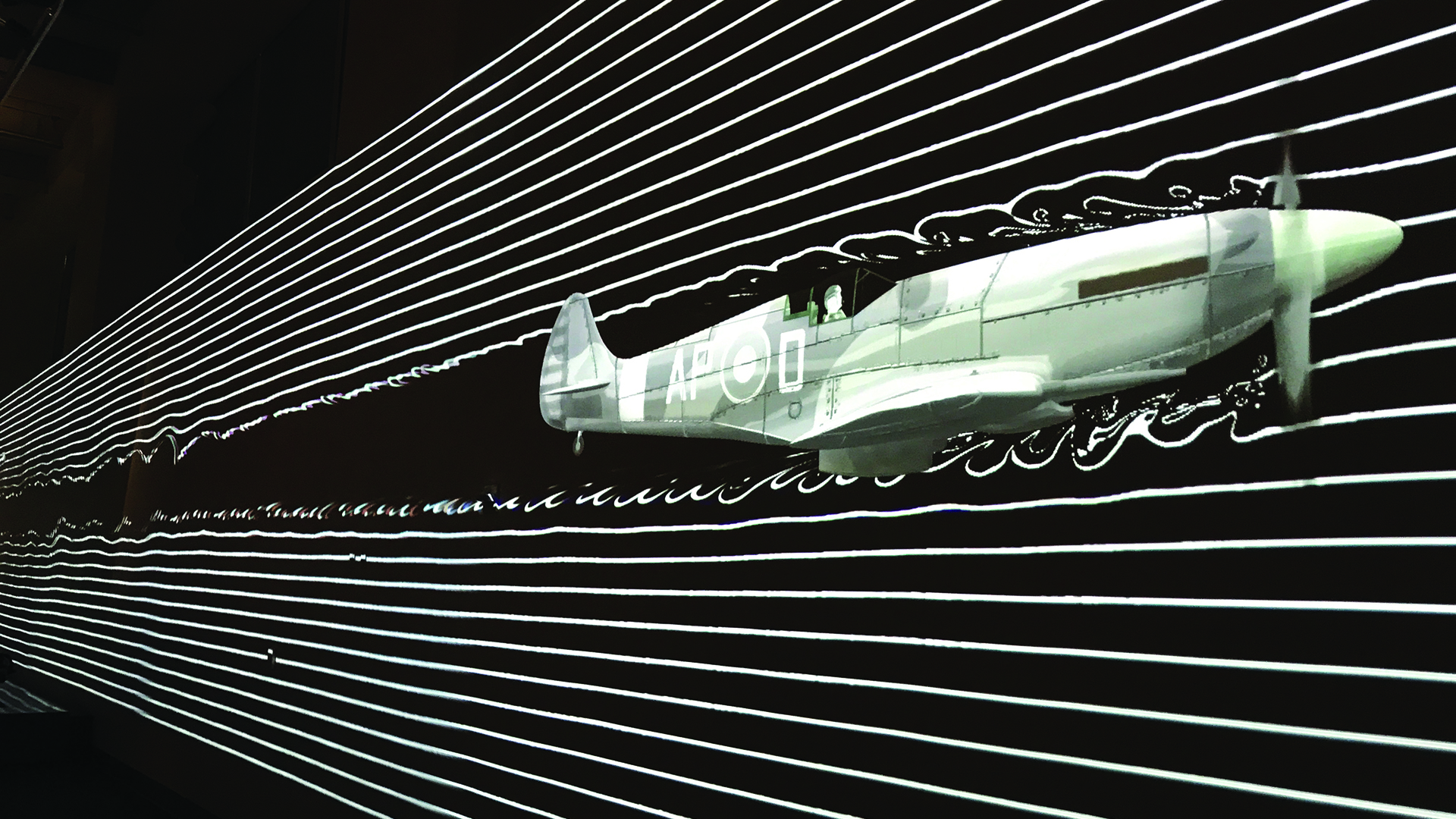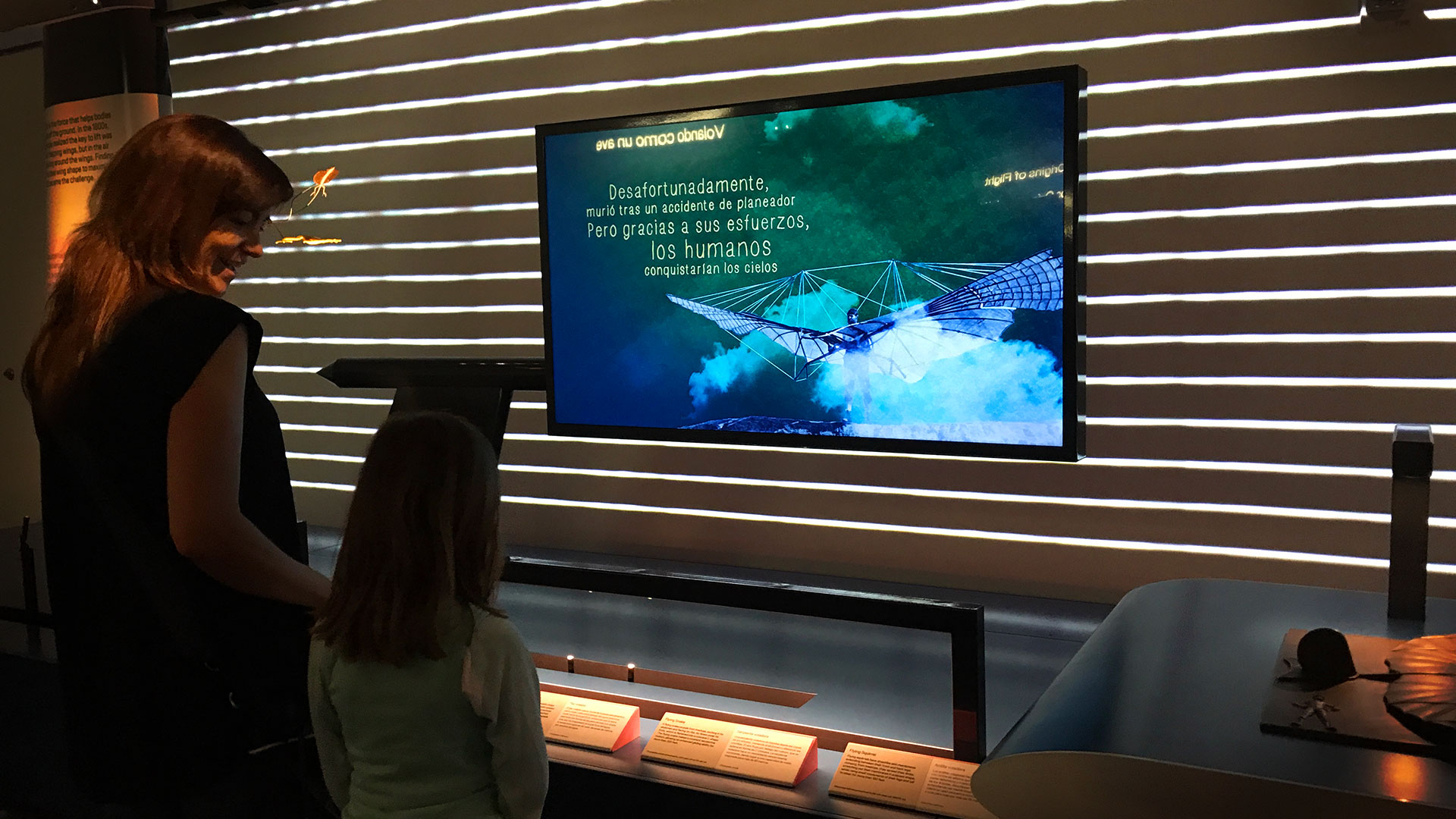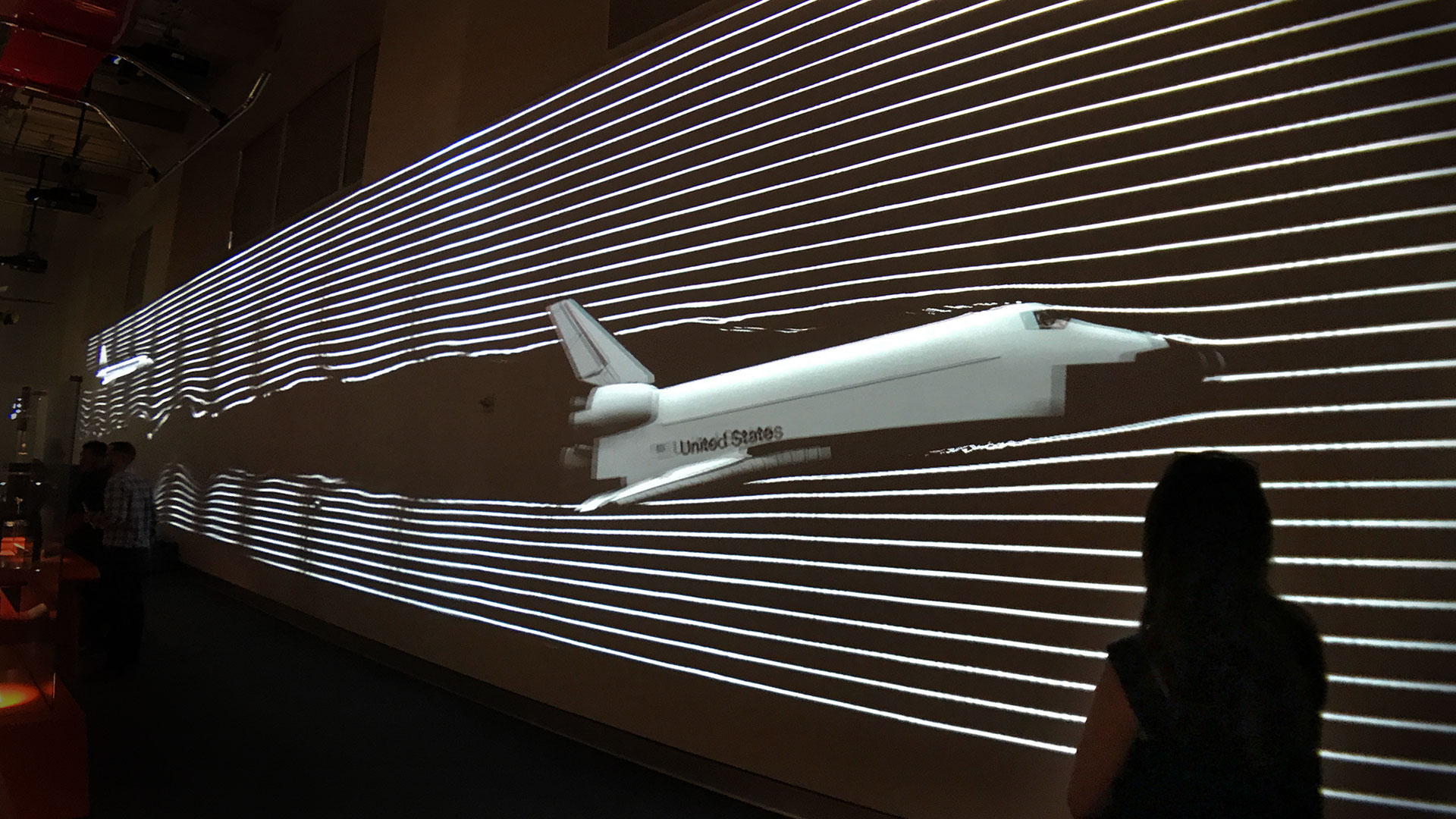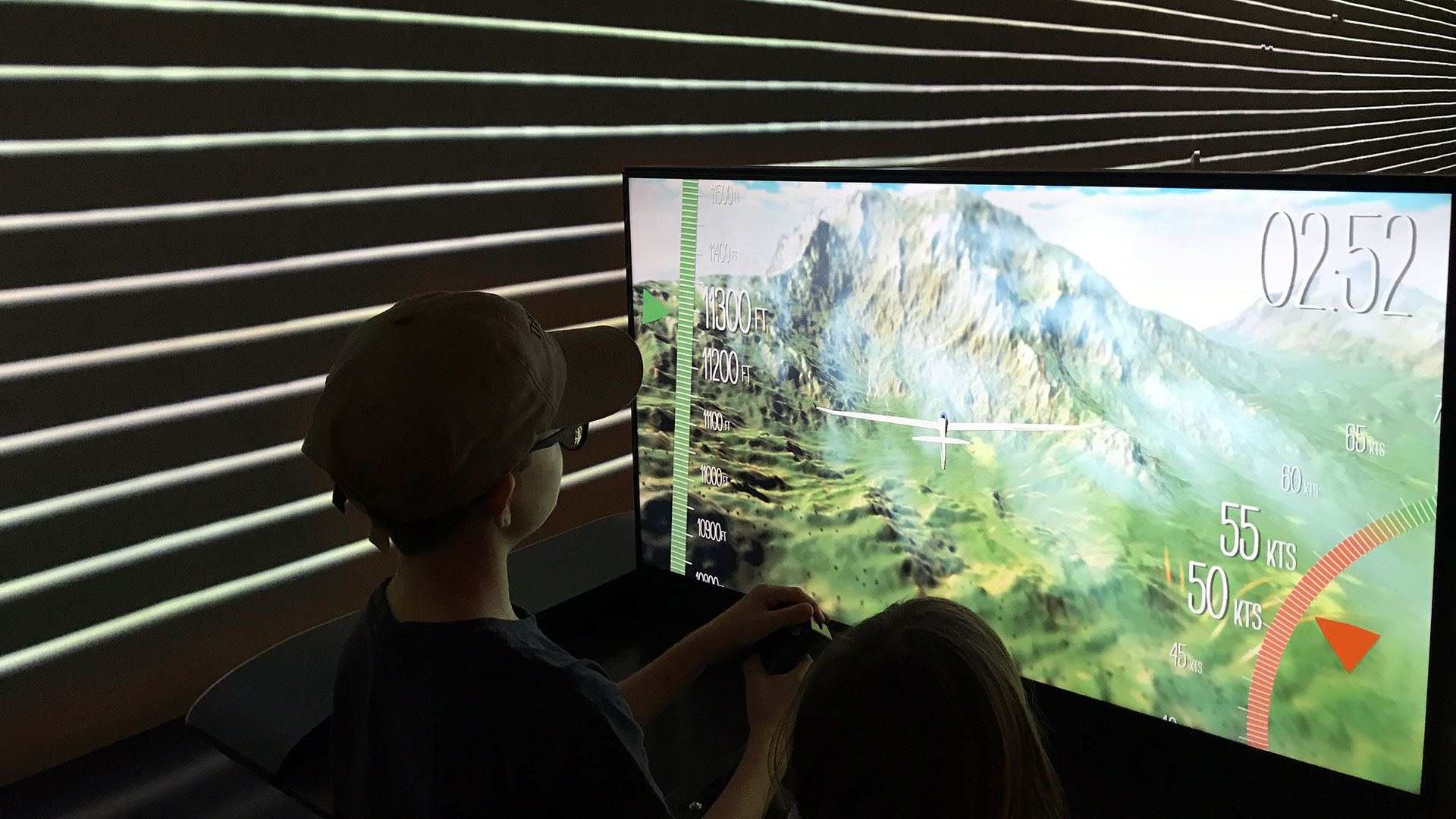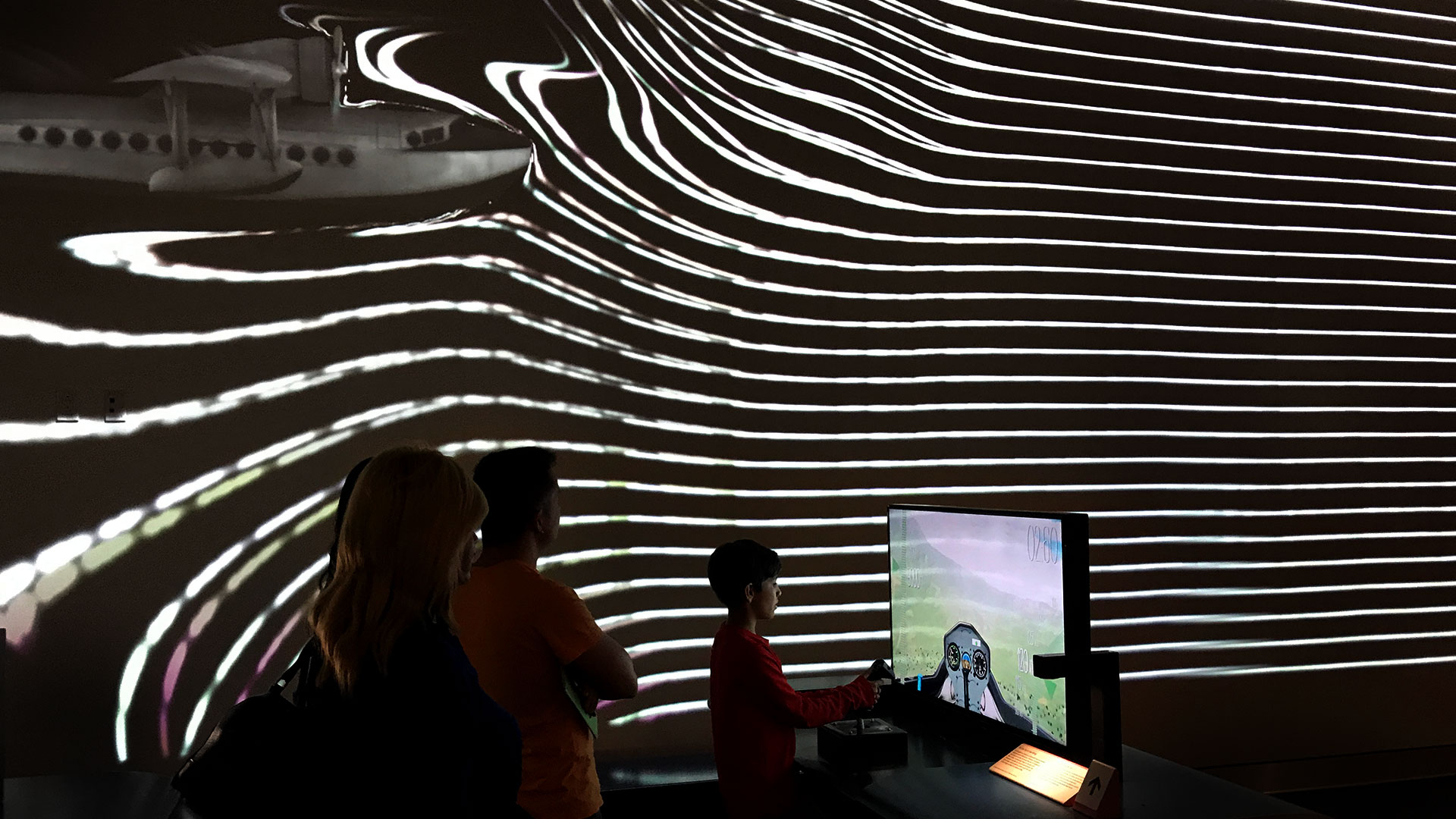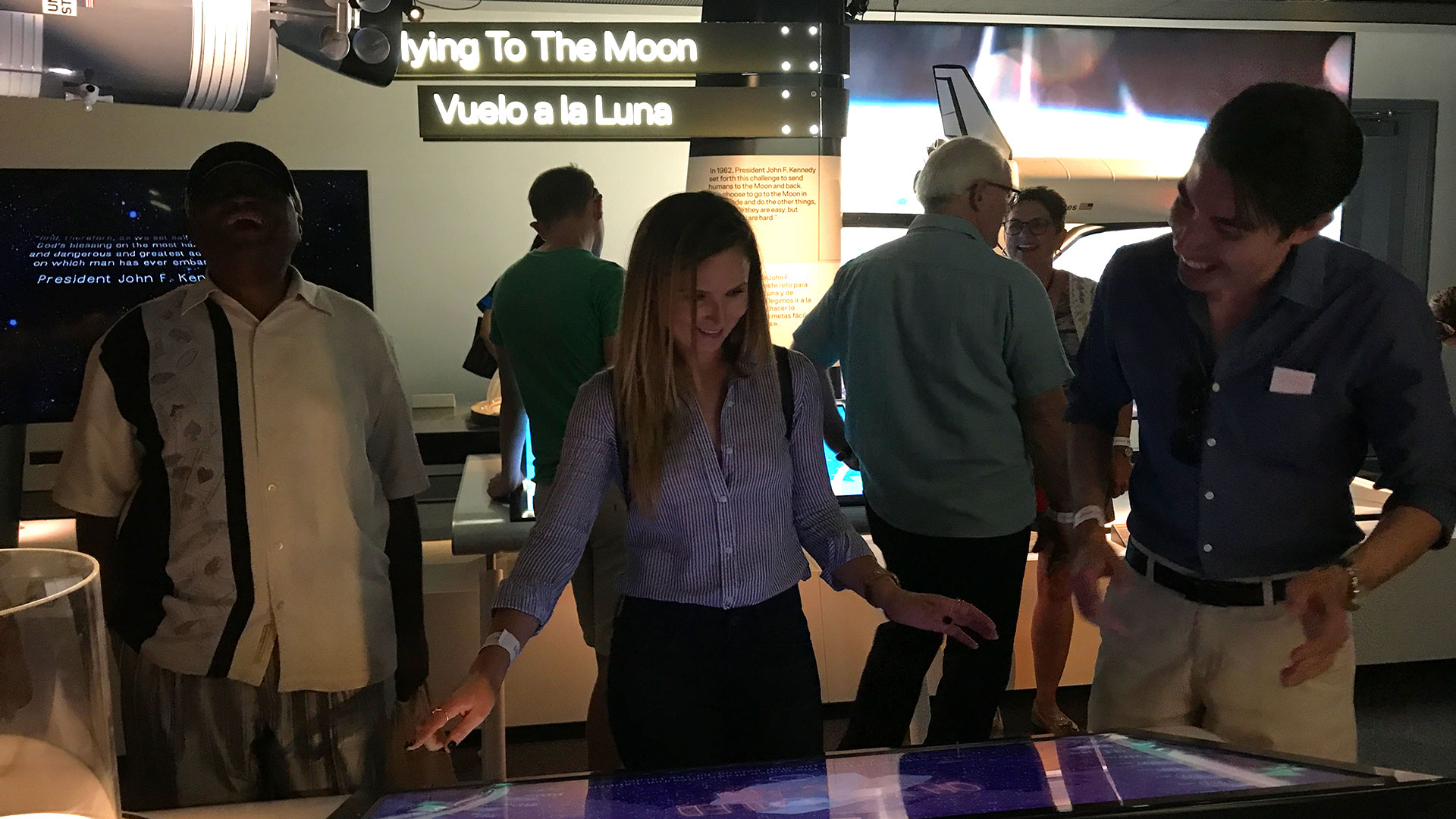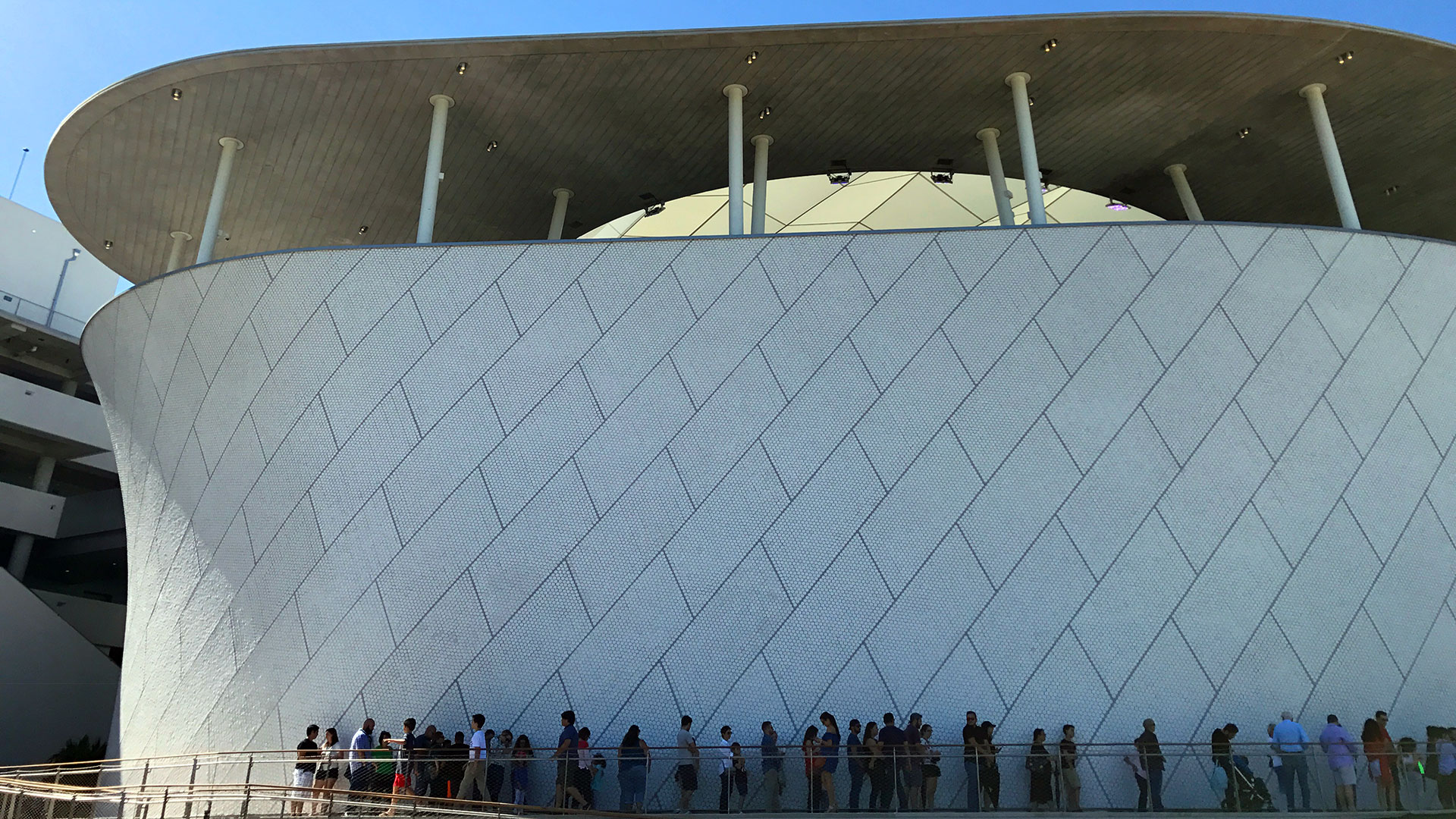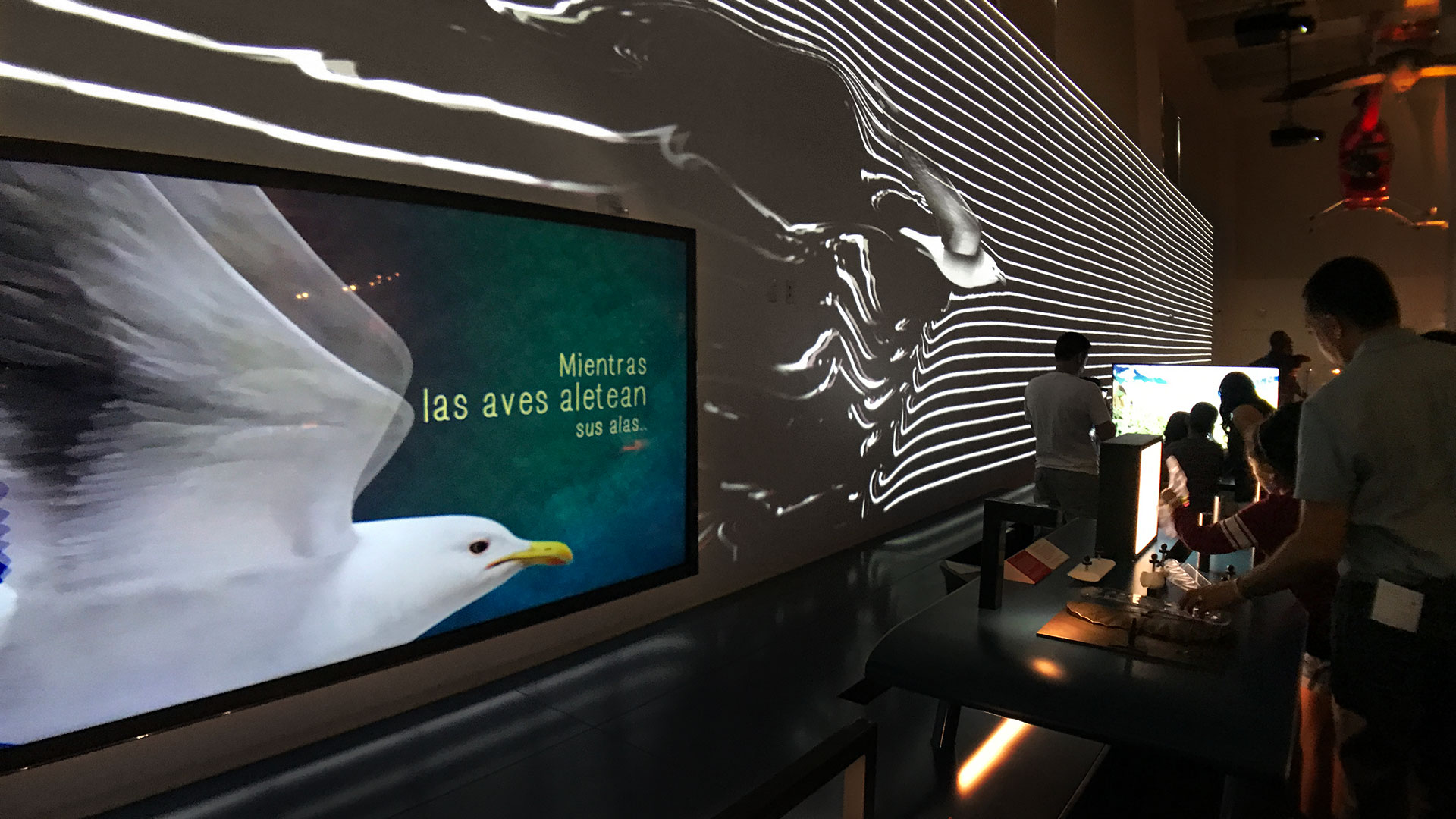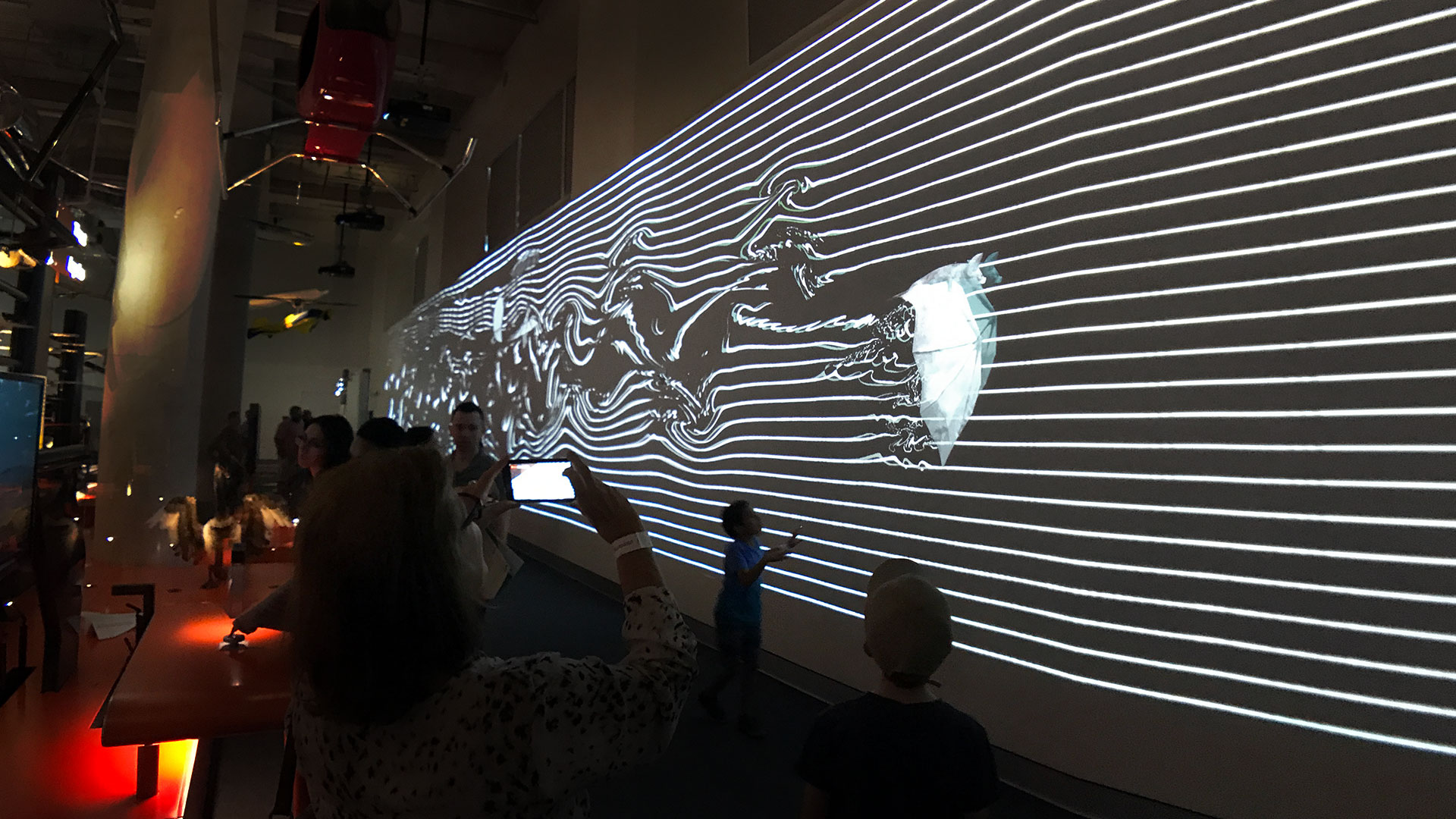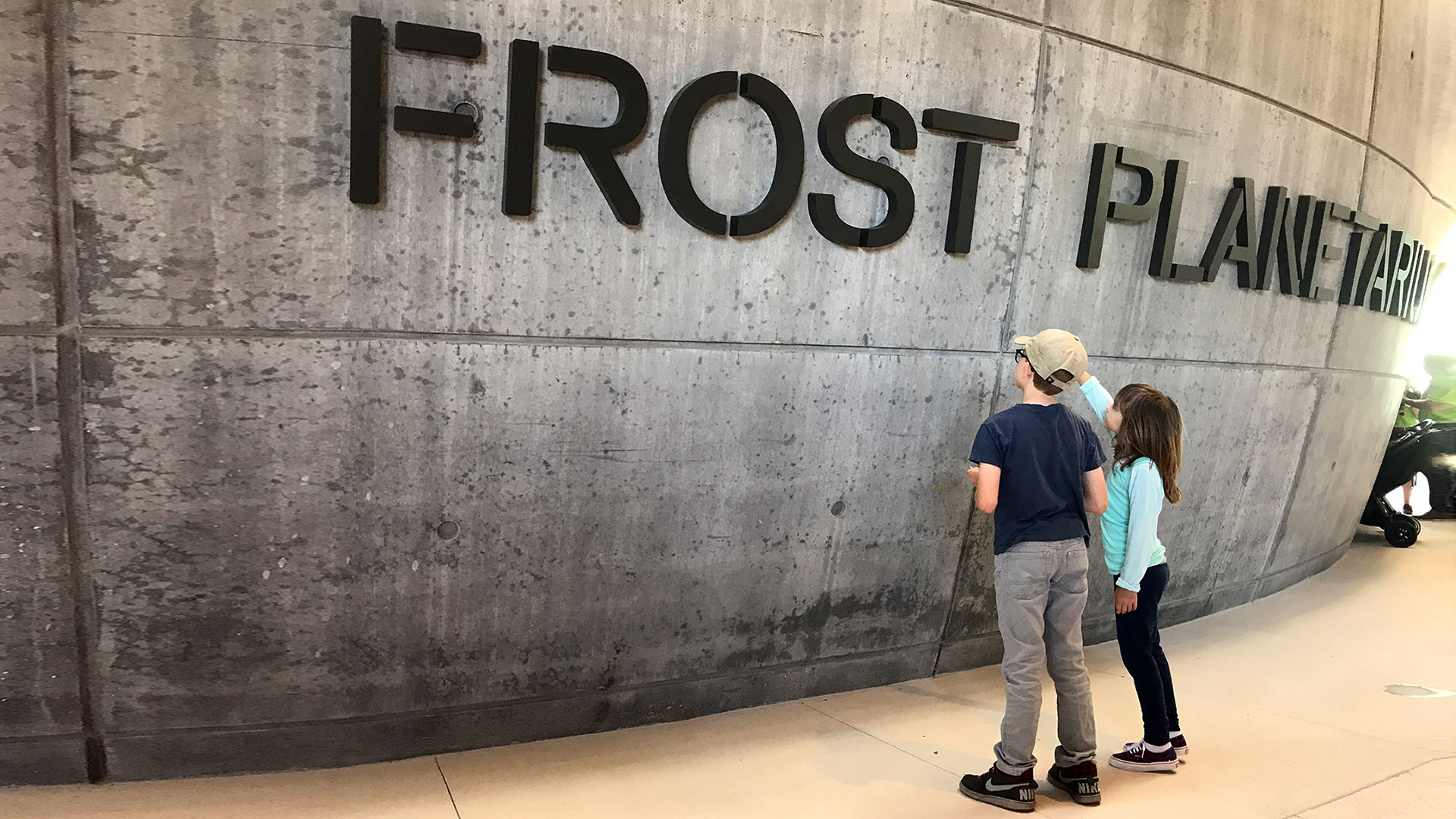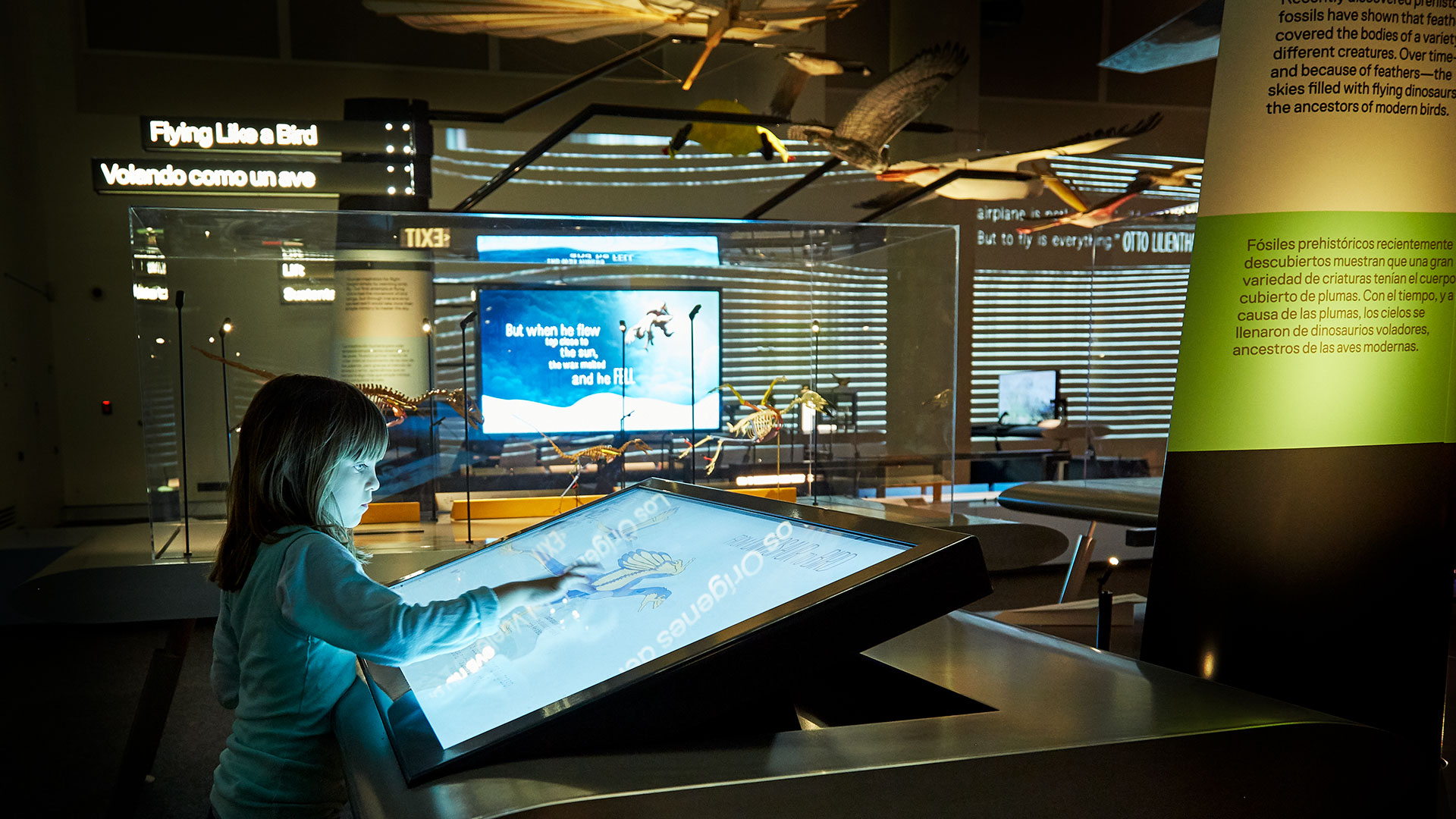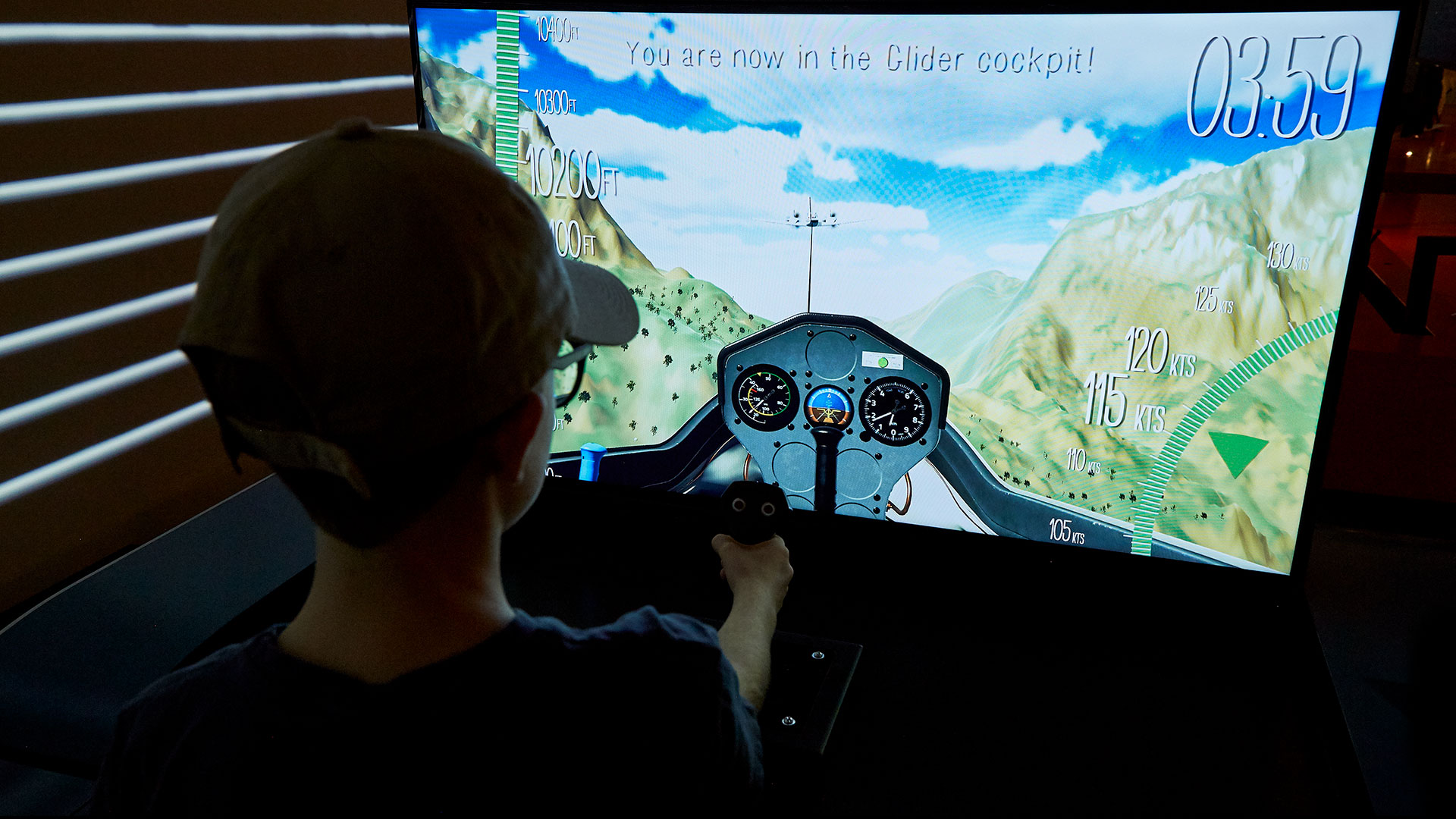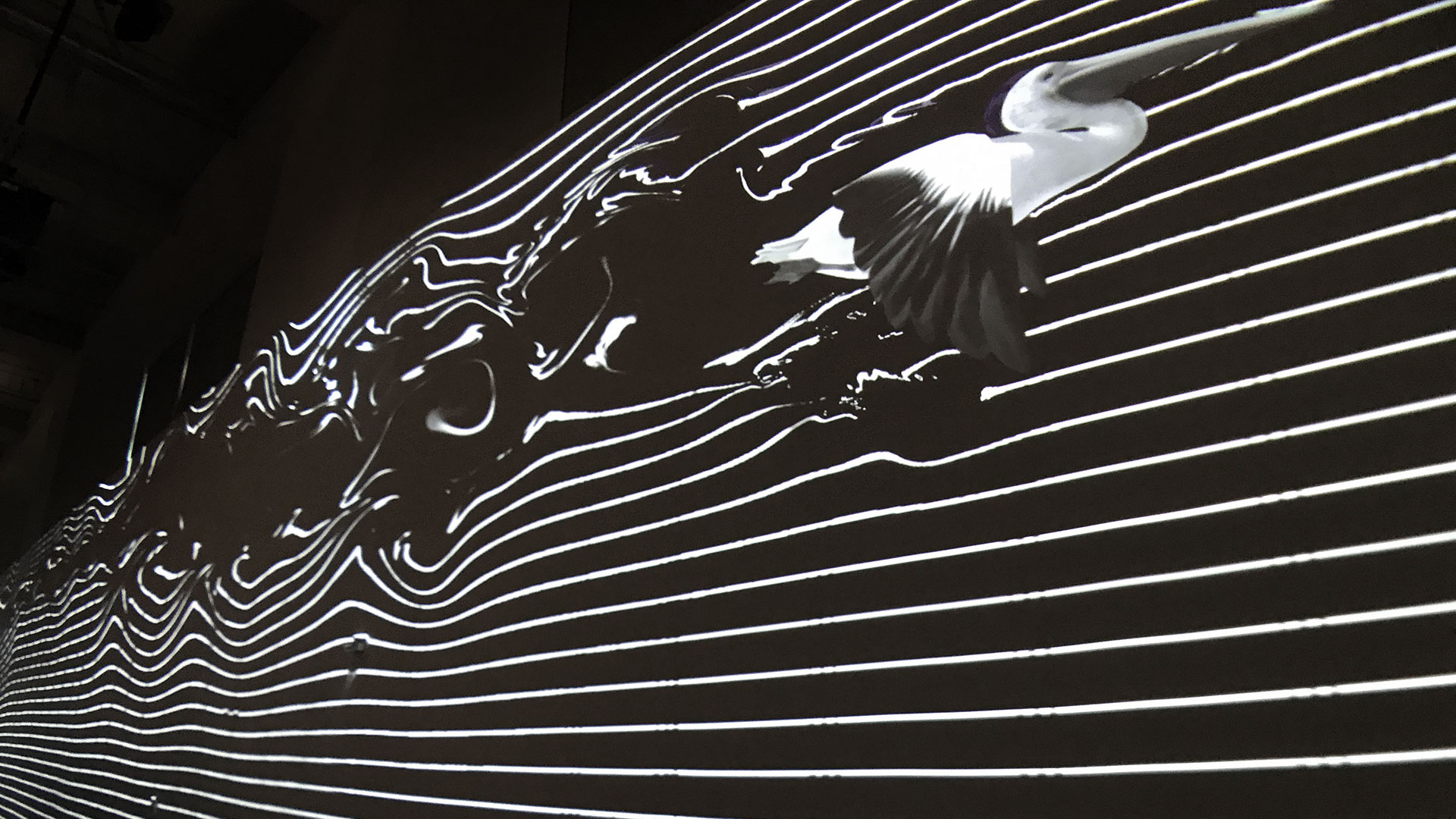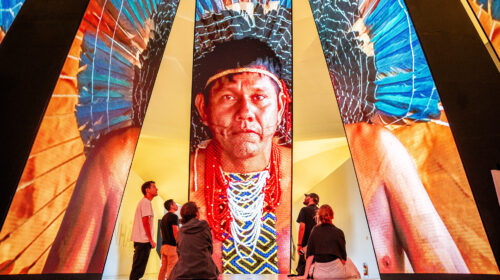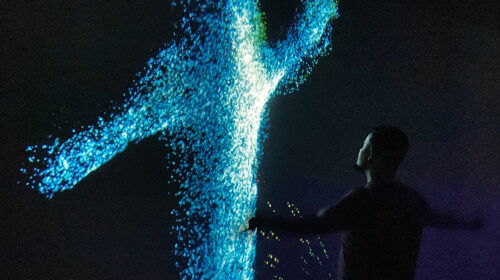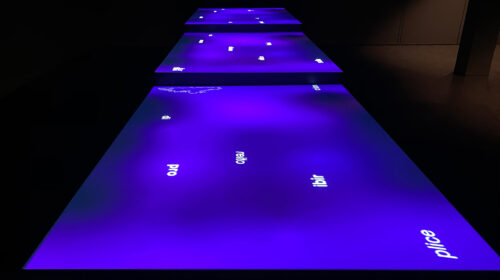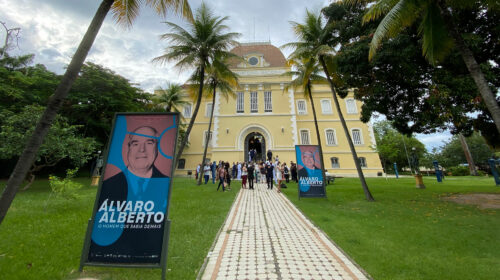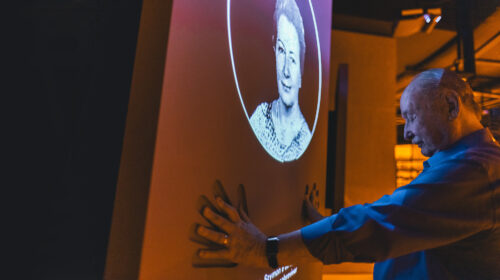Frost Science Museum
Multimiedia and interactive exhibition
SuperUber created the digital content and interactive experiences for the permanent exhibition Feathers to the Stars at the Frost Science Museum in Miami. Focused on the past, present, and future of flight, the bilingual exhibition brings together multiple visual languages to tell a complex story grounded in experimentation.
Flight Wall
The Flight Wall is a large-scale generative art installation that spans the exhibition space. A minimalist black-and-white projection—approximately 65 feet wide—simulates a real-time wind tunnel, revealing the invisible airflows around flying creatures and machines. Between sequences, quotes appear as drifting smoke particles, evoking the movement and poetry of flight.
Animations
Seven 2D and 3D animated videos define the exhibition’s thematic clusters. Using a custom visual identity, they combine cut-out animation, CGI, motion graphics, and sound design to explore the history of human flight across the gallery.
Interactives
A series of hands-on experiences invite visitors to experiment with the principles of flight: an interactive timeline tracing aviation pioneers; a 3D glider simulator where visitors search for rising air thermals; mission-based games recreating the Apollo journey to the Moon and a Mars landing; dial-controlled slow-motion studies of hovering and landing; and an interactive that connects dinosaur anatomy to the evolution of bird flight.
In collaboration with Frost Museum and Casson Mann
Photos by Julian Restrepo and Liana Brazil
